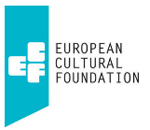On Thursday the 23rd April 2015, Krytyka Polityczna looked at the impact which art can have upon politics.
About the evening:
How can art influence society and what are the aims of such art? Krytyka Polityczna hosted a seminar focusing on the ways in which artistic strategies seek to change political realities.
This seminar showcased the modern Polish tradition of critical art, with particular reference to the work of a variety of politically engaged Polish artists, including Paweł Althamer, Katarzyna Górna, Joanna Rajkowska and Artur Żmijewski.
Brief background information on some of the key artists referred to can be found below and you can access Igor Stokfiszewski presentation notes (with links to images, background information and related videos) here. It is recommended that you open the presentation notes in a separate window to have available while watching the recording of the event.
Speaker:
Igor Stokfiszewski has been a Krytyka Polityczna journalist, editor and activist since 2006. He is also an art critic and playwright and specialises in political engagement in art. In 2009, he published the book, Zwrot polityczny [The Political Turn], which looks at the representation of the transition in Polish visual arts, theatre and literature in the 1990s and the early 2000s. In 2012, he worked on the team overseeing the 7th Berlin Biennale.
Paweł Althamer is a well-established and internationally renowned Polish artist, who has been active in diverse mediums since the early 90s, winning prestigious prizes both for his humanist approach and his originality.
His work typically takes communities into account, in many cases incorporating them in or making them the bases of his art work. This work has also been presented in many different formats, from performance through to video art and a period spent selling rag dolls with his wife.
Graduating from the Warsaw Academy of Fine Arts in 1993, he had already co-established an important collective of young Polish artists, Kowalnia, two years earlier. It was also in 1991 that Paweł made the first of two trips to Mali, whose traditional art work and social perspectives can be seen in some of Paweł’s own pieces.
Despite working in many formats, a continued focus on human corporality and transience can be perceived, as well as a tendency to the inclusion of sculptural elements. This close focus on humanity can also be witnessed in his work looking at sensory stimuli, in particular sensory deprivation and the impact of narcotics. Paweł’s main employment continues this humanistic approach, as he leads ceramic workshops with the grupa nowolipie, which looks to help people suffering from multiple sclerosis.
Another element which often comes forward in Paweł Althamer’s work is the concept of reality and perceptions. In association with Artur Żmijewski, Paweł made a series of recordings in 2003-2004, which explored human perception. Later he developed on this theme, with a series of his own films and city tours, in which actors were hired to undertake everyday tasks, contorting “reality” by artificially constructing it. Similarly, visitors to several of Paweł’s exhibitions have been confronted with unexpected realities, with museum spaces being reconfigured to either their former use or turned into portals, transporting the visitors through, rather than to, the exhibitions.
Paweł is also known for the mediative role of much of his work, with his work often focusing on other actors, who themselves create or become the art. Several of these works also offer a spotlight to otherwise sidelined members of society, allowing the young, the foreign and the disabled to take centre stage in circumstances in which they would otherwise seldom feature.
In his more recent exhibitions, Paweł also seems to have expanded upon his prior mediative efforts and has created directly participatory exhibtions, where the visitors themselves form the exhibtion. In Almach in 2011, guests and workers at the museum would be cast, creating a permanent snapshot of this section of society, whereas, in the Draughtsmen’s Congress in 2014, visitors were encouraged to visually express their emotions on a diverse range of topics and in relation to the prior expressions of other visitors.
Katarzyna Górna is a Polish artist mostly known for her work in large format black and white photographs. Educated at the Warsaw Academy of Fine Art from 1989-1994, her work first started appearing towards the end of her studies and tends to look at how women are perceived in society, with a focus on their cultural depictions and the social and symbolic forms these often adopt.
Her work challenges both dominant narratives of masculinity as well as the shoehorning of women into stereotypical roles, be this in modern popular culture or within religious iconography.
Early on in her career the aesthetic of her approach is quite subtle, as epitomised in her work with Katarzyna Korza, whereas later on this becomes more explicit. In 1995’s Ten Virgins she takes a biblical parable and removes its original judgemental capacity, using it instead to comment on the realities of female existence. This work features ten naked women positioned amidst discarded symbols of virginity and ultrasounds. The ultrasounds suggest the pregnancies of several of the women involved, while withholding clarification as to which of the women this might concern and the wisdom or otherwise of the acquisition of their current states.
Kataryzna is, however, perhaps best known for her Madonna series of photographs. In this series of portraits Katarzyna takes both classical and contemporary Madonna depictions and adapts them to display the realities of female existence, showing menstruation, gender relations and motherhood. This series creates a new female visual identity, portraying real female life on a breadth conspicuously absent from many of the religious and cultural depictions whose imagery she adopts.
Men seldom feature in Katarzyna’s work, but when they do appear they tend to do so as objects of humorous mockery, whose bodies are critically evaluated in the fashion in which popular culture tends to approach female bodies. This mockery thusly undermines dominant social discourses whose criteria for female bodies tend to still be more critical than those which pertain to men.
Katarzyna’s more recent works show a greater range of mediums and deal with transgender themes and sexual orientation, blurring the lines between traditional male/female distinctions.
Johanna Rajkowska is a Polish artist, active in diverse media. Educated in both art history and painting at the Jagiellonian University of Krakow, respectively the Krakow Academy of Fine Arts, Johanna’s work takes an ironic approach to the relationships which people have with the world around them.
In approaching these relationships, the human body is often brought to the fore, be it in the form of deformed mannequins representing pathologies, through the use of her own bodily fluids to undermine commodification, the birth of her own daughter in Berlin to counter historical narratives or the staged archaelogical recovery of human remains to address local concerns about infant mortality.
One work, which seems to combine Johanna’s interests in human psychology and physicality is Dream Diary. In the first part of this work, Johanna formulates her own most intimate experiences and emotions into the form of commercial literature, once more personalising what we often experience as an inpersonal commodity. In the second part of Dream Diary meanwhile, Johanna brought together large numbers of young people, who then lived together within a gallery space for six days, recording their own thoughts emerging from this experience and subsequently formulating dream diaries on the strength of their encounters and resultant dreams in this newly personal public space.
Further projects have continued to look at the commidification of life and focused on the relationship between different perceptions of realities, be it by approaching cultural understandings in Turkey or installing a giant artificial palm tree in Warsaw city centre.
Moreover, her work in public spaces, such as Oxygenator, which focused on open air installations and the social benefits of such, earned her 2007’s prestigious Passport Prize from the Polish socio-political magazine Polityka.
Support:
This debate took place with the kind support of the Warsaw City Council and the European Cultural Foundation.




